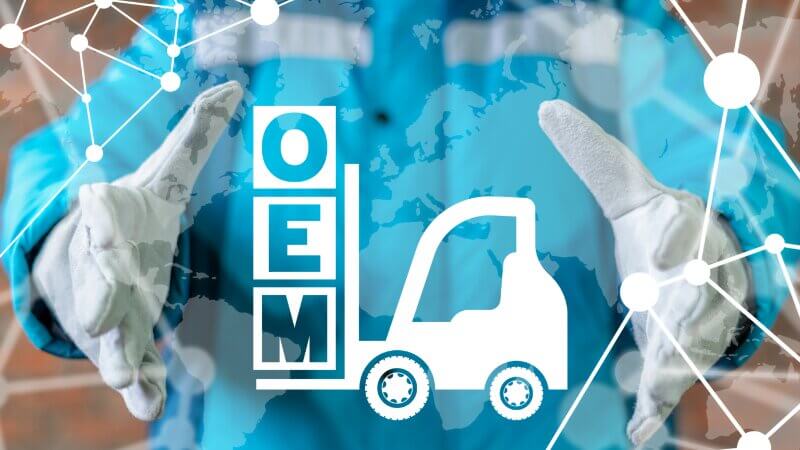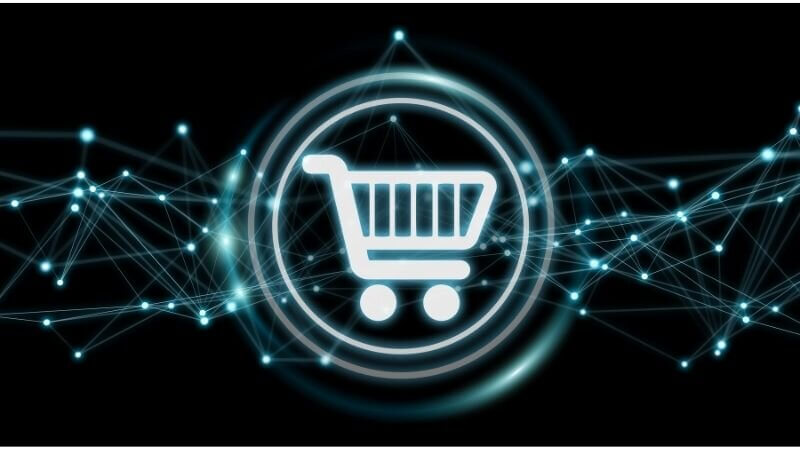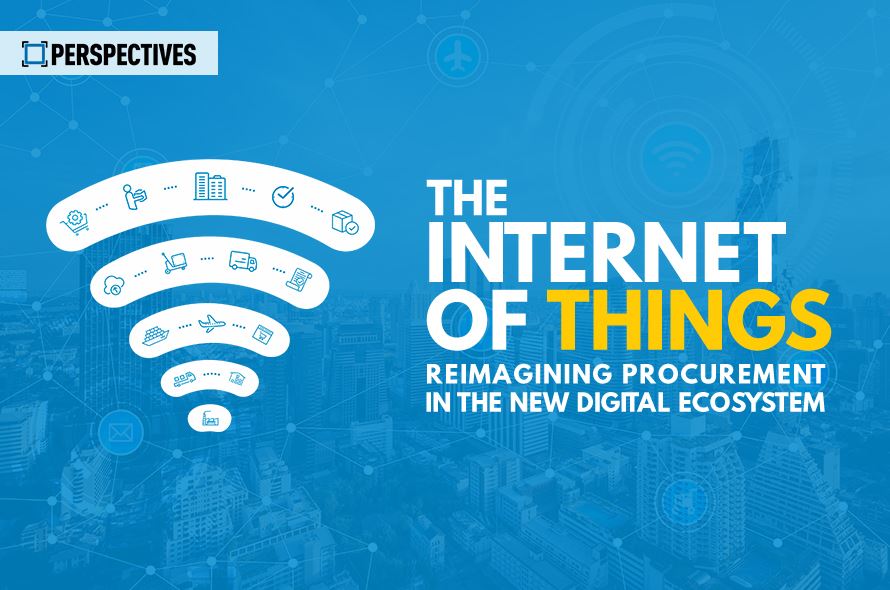How Can OEMs Benefit from e-Procurement in UAE

How Can OEMs Benefit from e-Procurement in UAE
e-procurement in UAE is not an isolated scenario; today’s world is running on digital wheels. Every industry is employing its digital skills to reap improved performance. The opportunities are immense.
However, despite continuous evolution, OEMs are slow to adapt to digital tools and techniques. It is because of the over-reliance on traditional skills and methods. As a result, the cycle from indirect procurement to the final delivery to customers, consumes 80% of the time of sourcing teams.
Cutting corners has become the pandemic-enforced trend to maximize profits in a business. At this time, digitalization in the supply chain can be a worthy step. It offers multiple advantages and underlines significant growth in the figures. To best understand its influence, let us unearth some key benefits.
Solving the Challenges in Supply Chain
The world is still recovering from the impacts of the COVID-19 pandemic. If we talk about the manufacturing sector, the virus has piled up on the challenges it was already facing. The COVID-19 induced lockdown dealt a heavy blow to the UAE economy, with businesses, and their supply chain all bearing the brunt. The International Monetary Fund (IMF) projected a 6.6% contraction in the GDP last year. It was mainly due to the impact of COVID-19 on key performance sectors and the fall in oil prices.
Sourcing the raw materials took the backseat, which resulted in a dip in manufactured products. Subsequently, the supplies to the end-users also got hampered. The dampening of business activities posed several challenges for the businesses to overcome.
To resolve the challenges, making a move in the right direction is imminent. With digitalization, businesses can adhere to the COVID-19 guidelines while conducting their business activities. Digital supply chain solutions are the most basic and foremost available methods to revive the lull operational activity.
Aligning with the Economic Growth
The UAE government announced a financial stimulus package to the tune of AED 100 Billion, among other measures to dilute the impact of the lockdown. However, the revival is not as instantaneous as the losses.
The IMF painted a brighter picture of the UAE’s economic recovery with a 3.1% growth, better than its 1.3% projection in October 2020. The positive outlook is a result of the combined efforts of the country and its citizens. OEMs can expedite their transition from traditional competencies to modern ones like adoption of a P2P software solution and supply chain digitization initiatives. Procurement automation, also known as P2P automation is integral to OEMs in UAE to stay on the course to recovery.
Taking a Step Towards Procurement 4.0
Since we live in Industry 4.0 era, we can find the production chain going ostensibly digital in its entirety. The ability to get a bird’s-eye view of your complete production link hands a better chance to minimize losses and maximize productivity. Businesses can acquire the necessary information on their logistics, such as the position of trucks, containers, and even pallets. All this at the click of a button.
To promote digital supply chain transformation, the UAE government is already taking steps under its Smart Government initiative to become a paperless government by 2021. The government is inviting the bid for tenders via electronic mode to facilitate a seamless procure-to-pay solution. Through this, suppliers can monitor their purchase orders and also submit digital invoices. This e-Procurement solution aims at digitizing and automating the complete process.
As digitalization is inevitable, OEMs must deploy it in their operational activities to make progress. e-procurement will enable easy management of complex supply chain processes. It will also allow businesses to use their people’s talent in other critical areas that require human involvement.
Experiencing Improved Decision-Making
Data is the key to gaining visibility into the supply chain. It is enabling digital supply chain solutions to divulge critical information to improve your decision-making capabilities and optimize business growth. With procurement automation in place, businesses can effectively monitor key performance indicators. On its basis, they can identify the improvement areas.
Cost-optimization is a must during this period of economic rebound. P2P automation offers this across the whole supply chain management processes. Digitalization’s other advantages are transparency, more visibility, a safe and neat collection of data, and cost-efficiency. All in all, businesses can streamline their processes and manage them effectively.
The Now and the Next for CPOs of OEMs in UAE
Digital supply chain transformation in the UAE is imminent, as the economy branches out to new-age non-oil verticals. However, it should not be in parts. For OEMs in the UAE to benefit from the adoption of e-procurement, CPOs have to take a unified view of the different but interlinked silos of the supply chain. Therefore, CPOs in UAE need to replace multiple solutions for different procurement functions with an integrated procurement automation system and consolidate supplier base management functions into one centralized control tower.
CPOs and the E-Commerce Boom in Indirect Material Sourcing

CPOs and the E-Commerce Boom in Indirect Material Sourcing
Indirect material sourcing has long been riddled with uncontrolled expenditure, non-compliance, and counterfeit products. Traditionally, these risks have made CPOs of large enterprises opt for a direct approach when dealing with suppliers.
With rising costs, potentially unregulated products, and the COVID19 pandemic-led supply chain disruptions in the UAE, a CPO’s job is becoming increasingly stressful. It is especially true for CPOs of large manufacturing enterprises across the Middle-East and North Africa (MENA) geographies where the pandemic has impacted 60% of freight capacity and multimodal logistics.
Integrated Solutions for Procurement
With the e-commerce boom taking over B2B marketplaces, CPOs are welcoming procurement automation solutions with open arms. These new generation P2P software solutions offer scalability, reliability, and risk assessment — all under the same roof.
Besides providing attribute-rich catalogs of pre-vetted, high-quality vendors of indirect materials, these B2B e-commerce solutions offer a dynamic range of functions. Some of these functions are customization, user-friendly interfaces and search options, real-time pricing, and industry benchmark comparisons. With their AI and ML capabilities, these systems can even generate analytics on KPIs such as price spread and per-category spend.
Benefits of E-Commerce for CPOs
B2B e-commerce offers a series of features that are beneficial across the p2p procurement process. They have multiple payment options available in AED, language translation assistance to Arabic, and easy refunds & return policies.
They also offer filtration of vendors based on their proximity to the manufacturing unit, quick logistics, and competitive shipping rates throughout the emirates. Let’s take a look at some of the key benefits e-commerce systems offer to CPOs.
Agility
B2B e-commerce solutions give enterprises quick and easy access to a robust e-catalog of indirect materials, akin to a B2C e-commerce experience. The products and services are structured and itemized based on several attributes and filtered by a configurable list of business rules. This includes but is not limited to compliances, ratings & reviews, technical specs, availability, and shipping rates. These automated systems have rapid TATs across the p2p pathway and endow the CPOs with greater transparency and market awareness channels to make better decisions.
For instance, the global procurement head of an automotive OEM has said that e-commerce adoption for indirect material sourcing has increased their price competitiveness. “It has expanded our knowledge,” he explained, adding that their enterprise is now planning to digitize their direct material sourcing as well.
Cost Savings
Typically, enterprises spend 15% to 30% of their revenue on indirect material sourcing. It is usually valid for enterprises with fragmented spending structures and limited internal resources for procurements. The human capital spent on the traditional procurement process is perhaps the highest. CPOs spend countless hours in monotonous transactional activities that leave them with little to no time for any value-addition work to the enterprise.
However, with digital procurement automation solutions, operational costs in UAE can be reduced up to 40%. More importantly, they offload CPOs with hours of repetitive work. It unlocks critical free time for CPOs to spend on supply chain management and optimization of the p2p procurement process.
Technology Integration
For large manufacturing enterprises, the integration of an e-commerce marketplace with their existing ERP is the deciding feature of pre-investment. By entangling itself with the enterprise’s p2p procurement process, the e-commerce solution automatizes and simplifies a vital link of the digital supply chain. It enables the system to intelligently monitor inventory, issue purchase orders, execute payments, track deliveries, and receive stock. It also minimizes the hassles of negotiations, contract management, and price comparisons.
Some of the advanced digital procurement systems offered by digital supply chain solutions enterprises can seamlessly integrate with ERPs like SAP, Jagger, and Oracle. These systems successfully streamline the accounting, reporting, and controlling of the procurement process, thus building end-to-end supply chain visibility.
Data Cleaning & Management
A global market study indicates that almost 63% of the items listed in a conventional procurement catalog have incomplete or duplicate information. However, with digital supply chain solutions, CPOs can assess their MRO master data quality using the system’s native AI and ML capabilities. These data analytics tools can also learn user behavior over time and generate optimized results that promote operational excellence.
Reports on purchase, fulfillment data, including buying history, spend limits, and wish lists, make it convenient for procurement teams to increase their work efficiency.
What CPOs Need to Know
With increasing demand, the scale of high-quality suppliers of indirect materials is rapidly growing on B2B e-commerce solutions. Some experts predict that by the end of 2021, 60% of the large enterprises will be using digital procurement methods for indirect material sourcing. It is also aligned with the government’s vision to digitize UAE’s economy in the coming years.
With a rationalized and automated procurement solution in place, the role of the CPO is shifting from being a negotiator to that of a creator. The present-day CPO discovers new marketplaces, innovates new procurement strategies, and collaborates with suppliers. The CPO also draws new digital blueprints for quick approvals and reviews, and smoothens the enterprise’s upstream supply chain operations.
Add to cart: Digital Procurement for B2B is the New Normal

Add to cart: Digital Procurement for B2B is the New Normal
Digital procurement for B2B is on the cusp of a significant transformation. Supply chain disruptions through the pandemic are causing CPOs to look at B2B procurement in a new light. While the KRAs of quality, cost, and delivery continue to be relevant, there is an increasing demand for spend analysis, transparency, data, supplier reliability, and risk management. In the near future enterprises will get a more personalized customer experience similar to what individuals get from B2C e-commerce.
What is Digital Procurement for B2B?
Digital procurement for B2B migrates enterprises from ad-hoc and offline buying to a digitized source-to-pay platform. It replicates the customer experience of a B2C e-commerce marketplace.
Like a B2C e-commerce marketplace, a B2B online marketplace offers a catalog of line items spread across product categories. Users can browse through the catalog to compare suppliers, brands, and products. They can compare costs, volume discounts, expected time of arrival (ETA), and inventory availability to place orders.
However, B2B e-commerce offers several advantages, and therefore enterprises have been drawn to it for a long time now.
Reasons for Adopting Digital Procurement Before the Pandemic
The following reasons had been driving enterprises’ adoption of digital procurement before the pandemic:
- Faster Delivery: Agility is a significant challenge in enterprise procurement. B2B online marketplaces offer quicker and cheaper delivery than their offline counterparts and are an enabler of value.
- Cost Control and Compliance: Cost efficiency is a critical KPI for procurement teams. B2B e-commerce platforms enable inter-supplier comparisons and thus augment ease of spending control and compliance.
- Scale: In manufacturing, order sizes surpass the scope of a piece-meal approach and is critical to procurement officers. B2B marketplaces can fulfill large scale industrial purchase orders.
- Quality: The quality of industrial supplies determines the quality of industrial output. B2B marketplaces deploy internal quality control procedures that foster trust creation for enterprises.
Reasons for Upswing in Digital Procurement Through the Pandemic
While online shopping benefits in the B2B segment were visible long back, the pandemic has fastened the move towards digital procurement.
- Risk Management: Supply chain disruptions have been a significant challenge for enterprises. B2B marketplaces have responded with better data analytics, cloud computing, and the internet of things capabilities to augment supplier visibility.
- Reliability: B2B marketplaces with diverse and inclusive supplier ecosystems are less prone to supply chain disruptions than their offline counterparts.
- Safety: The pandemic has pushed the need for ensuring people’s health and safety. The online workflow supports collaboration across the supply chain and is safer than offline models of procurement.
Integrated Solutions: B2B procurement platforms allow enterprises to track, control, negotiate with suppliers, and report from a single platform. It will enable industrial buyers to get a B2C-like customer experience.
How Will Digital Procurement Make Life Easier for CPOs in the Future?
B2B marketplaces have seen a large scale adoption for some time now. Before the pandemic, the procurement officer’s responsibilities were those of negotiation and compliance. Beyond the pandemic, these responsibilities are likely to give way to supplier relationship building and risk management.
B2B procurement automation will soon upgrade to include artificial intelligence and machine learning capabilities. This will lead to a more personalized customer experience, share product recommendations, and set reminders to prevent inventory stock-out situations.
Vendor Consolidation Vs. Diversification: What is the Best Supply Chain Strategy?

Vendor Consolidation Vs. Diversification: What is the Best Supply Chain Strategy?
The pandemic brings the focus back on the classic debate: vendor consolidation or vendor diversification? Which of the two is the right supply chain management strategy. If your sourcing managers are searching for an answer to the question, we have got you covered. The truth is that your supply chain’s digital readiness can make all the difference to the answer.
What is Vendor Consolidation and What are its Benefits?
Vendor consolidation is a strategy to rightsize the existing supplier base and make it more cost-efficient, quality-centric, and stable. A vendor consolidation strategy will require you to map the value and category of procurement against each supplier and procure more industrial supplies from a chosen few suppliers. You can now reduce the number of vendors and reap the following benefits:
- Reduced Purchase Costs: When you purchase higher volumes of industrial supplies from handpicked suppliers, you will have higher bargaining power and ask for discounted prices. You can also explore the option of annual rate contracts to seek effective insulation against price increases.
- Reduced Process Costs: Once you reduce the number of suppliers, you will reduce the number of purchase orders and invoices. You will reduce the turnaround time for placing orders by integrating more line items in each order. You will reduce your process costs.
- Reduced Mismatches in Supplies: One of the hurdles of a large supplier base is many supplier codes, material codes, and supplier catalogs. Vendor consolidation allows your sourcing managers to work with fewer supplier codes, material codes, and catalogs. You will reduce the scope of mismatches between items that you order and those that you receive.
- Improved Supplier Relationships: When you increase your purchase orders’ value, suppliers will undoubtedly accord greater attention to your requirements. You can look forward to stable and reliable supplier relationships over the long term.
What is Vendor Diversification and What are its Benefits?
A vendor diversification strategy will require you to spread out your supplier base and work with many suppliers. Following are the benefits of vendor diversification:
- Opens Multiple Channels of Sourcing: Vendor diversification opens up multiple sourcing channels for your enterprise. It spreads out the procurement risks across a large number of suppliers and reduces your dependence on each supplier.
- Promotes Innovation and New Product Development: Vendor diversification augments innovation and new product development. You can engage with multiple suppliers, browse through their offerings, and select the one that fulfills your requirements.
- Promotes Competition among Suppliers: One of the benefits of diversifying your vendor base is that you have greater flexibility to choose your suppliers for each purchase order. It allows you to create an environment for competitive bidding and opt for the lowest price to get a competitive advantage.
What is the Best Supply Chain Strategy?
The best strategy depends on product category, procurement processes, and technology maturity. In the long run, for large and growing businesses, vendor consolidation provides the scale with reduced costs. The pandemic experience has shown that effective supply chain risk management calls for visibility into procurement.
Digital procurement solutions allow you to leverage analytics, map supplier performance, and make purchasing decisions. You can lean on an integrated platform with an inclusive supplier ecosystem and a single catalog managed by a single point of contact. This way, you can consolidate your supplier base, re-engineer your procurement process, and de-risk your supply chain.
Procurement Transformation for the Next Decade

Procurement Transformation for the Next Decade
The Future of Automation in Procurement

The Future of Automation in Procurement
How Internet of Things will affect Procurement Industry?

How Internet of Things will affect Procurement Industry?
How Procurement Can Treat the Lack of Visibility in Hospitals

How Procurement Can Treat the Lack of Visibility in Hospitals
What Do CPOs at World-Class Organizations Do Better?

What Do CPOs at World-Class Organizations Do Better?
5 Tips to Master Procurement Transformation

